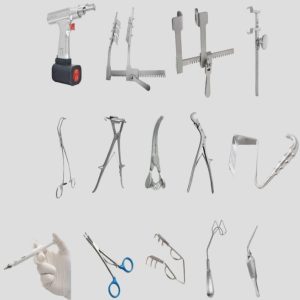
Ophthalmic Equipment: A Comprehensive Guide for Modern Eye Care
The ophthalmic equipment market has seen significant advancements in recent years, driven by the increasing prevalence of eye diseases and the growing demand for advanced diagnostic and surgical procedures. In this comprehensive guide, we will explore the various types of ophthalmic equipment, their applications, and the innovations shaping the future of eye care.
Introduction to Ophthalmic Equipment
Ophthalmic equipment encompasses a wide range of devices used by eye care professionals to diagnose, treat, and manage various eye conditions. These tools are essential for providing accurate diagnoses and effective treatments, ultimately enhancing patient outcomes.
Diagnostic Ophthalmic Equipment
1. Ophthalmoscopes
Ophthalmoscopes are handheld devices used to examine the interior structures of the eye, including the retina, optic disc, and blood vessels. They come in two main types: direct and indirect ophthalmoscopes.
- Direct Ophthalmoscopes: These provide a magnified view of the retina and are commonly used for routine eye examinations.
- Indirect Ophthalmoscopes: These offer a wider field of view and are often used for more detailed examinations of the peripheral retina.
2. Slit Lamps
Slit lamps are biomicroscopes that allow detailed examination of the anterior segment of the eye, including the cornea, iris, and lens. They are essential for diagnosing conditions such as cataracts, corneal ulcers, and glaucoma.
3. Retinal Cameras
Retinal cameras capture detailed images of the retina, enabling the detection and monitoring of retinal diseases such as diabetic retinopathy and age-related macular degeneration. Fundus cameras and optical coherence tomography (OCT) are common types of retinal imaging devices.
4. Perimeters
Perimeters are used to assess the visual field of patients, helping to diagnose and monitor glaucoma and other visual field defects. Automated perimeters, such as Humphrey field analyzers, are widely used in clinical practice.
5. Tonometers
Tonometers measure intraocular pressure (IOP), a crucial parameter in diagnosing and managing glaucoma. There are several types of tonometers, including Goldmann applanation tonometers, non-contact (air-puff) tonometers, and rebound tonometers.
Surgical Ophthalmic Equipment
1. Phacoemulsification Systems
Phacoemulsification is a modern cataract surgery technique that uses ultrasound to emulsify the lens, which is then aspirated out of the eye. Phacoemulsification systems, such as those manufactured by Alcon and Bausch + Lomb, are essential for performing this minimally invasive procedure.
2. Vitrectomy Machines
Vitrectomy machines are used in vitreoretinal surgeries to remove the vitreous gel from the eye. These machines are equipped with cutting, aspiration, and infusion capabilities, enabling the treatment of conditions such as retinal detachment, macular holes, and diabetic retinopathy.
3. Excimer Lasers
Excimer lasers are used in refractive surgeries, such as LASIK and PRK, to reshape the cornea and correct vision errors like myopia, hyperopia, and astigmatism. These lasers provide high precision and accuracy, resulting in improved visual outcomes for patients.
4. Femtosecond Lasers
Femtosecond lasers are used in various ophthalmic procedures, including cataract surgery and corneal transplants. They create precise incisions and perform tissue dissection with minimal damage, enhancing the safety and efficacy of these surgeries.
Innovations in Ophthalmic Equipment
1. Artificial Intelligence and Machine Learning
Artificial intelligence (AI) and machine learning (ML) are revolutionizing ophthalmology by enabling the development of advanced diagnostic tools. AI algorithms can analyze retinal images to detect early signs of diseases such as diabetic retinopathy and age-related macular degeneration, improving early diagnosis and treatment.
2. Portable and Handheld Devices
Portable and handheld ophthalmic devices are becoming increasingly popular, providing eye care professionals with the flexibility to perform examinations in various settings, including remote and underserved areas. These devices, such as handheld fundus cameras and portable slit lamps, enhance accessibility to eye care.
3. Teleophthalmology
Teleophthalmology leverages telemedicine technology to provide remote eye care consultations and screenings. This approach is particularly beneficial in rural and underserved regions, where access to specialized eye care may be limited.
4. Advanced Imaging Technologies
Innovations in imaging technologies, such as swept-source OCT and adaptive optics, are enhancing the resolution and accuracy of retinal imaging. These advancements enable the detailed visualization of retinal structures, facilitating the diagnosis and monitoring of complex eye conditions.
The Future of Ophthalmic Equipment
The future of ophthalmic equipment looks promising, with ongoing advancements aimed at improving diagnostic accuracy, surgical precision, and patient outcomes. Emerging technologies, such as gene therapy, stem cell therapy, and retinal implants, hold the potential to revolutionize the treatment of various eye diseases.
Conclusion
In conclusion, ophthalmic equipment plays a vital role in the diagnosis, treatment, and management of eye conditions. The continuous advancements in this field are enhancing the quality of eye care and improving patient outcomes. By staying informed about the latest innovations and integrating advanced technologies into practice, eye care professionals can provide the best possible care for their patients.
Go to Check – https://rigorinstruments.com/ophthalmic-surgical-instruments/


